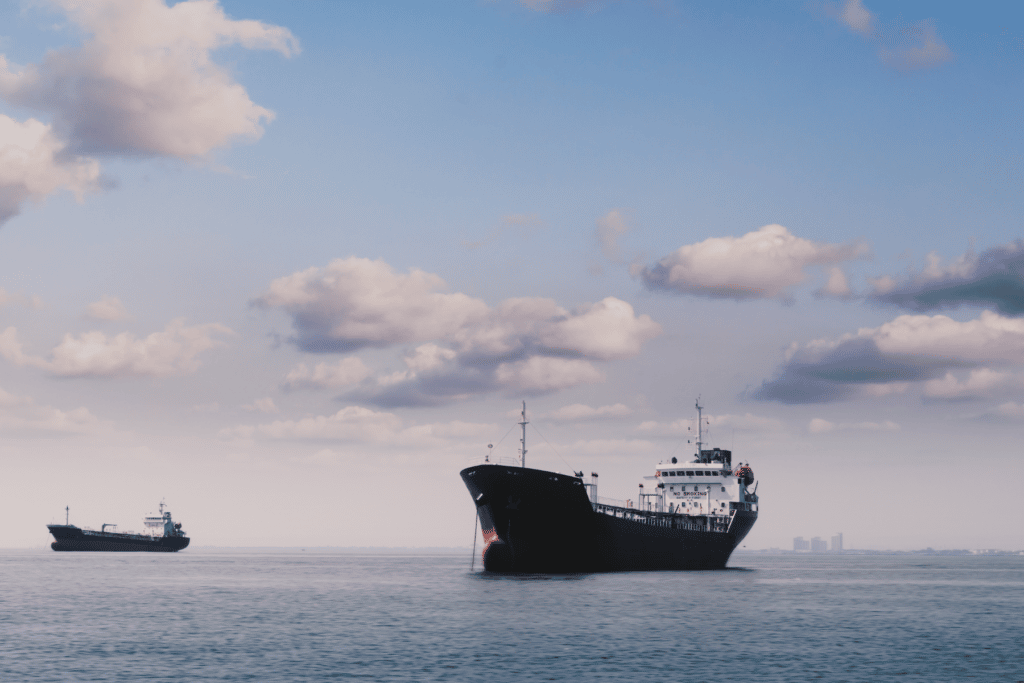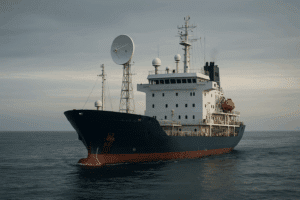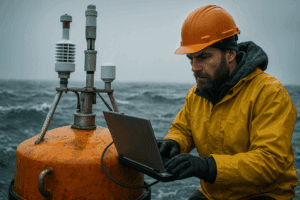International shipping is one of the major sources of greenhouse gas emissions (GHG), which continue to increase as the global trade grows. In order to align with Paris Agreement’s temperature goal of limiting global warming to 1.5 degrees Celsius, the whole industry has committed to make all efforts to reduce its carbon footprint.
January 2023 will see a major change in shipping industry regulation with the implementation of the mandatory Energy Efficiency Existing Ship Index (EEXI) measurement. The new rule will focus on evaluating the energy efficiency of each ship and reporting the same in their carbon intensity indicator (CII) yearly assessment.
What are IMO’s latest regulatory changes?
The International Maritime Organization (IMO)’s constant concerns about the environmental impacts of the shipping industry business have led to the implementation of measures, from short to mid and long term. It started with the adoption of its initial strategy for reduction of GHG emissions from ships in 2018.
Then, on 1 November 2022, the amendments done to MARPOL Annex VI to reach a commitment of carbon intensity reduction of the worldwide shipping business entered into force. Greenhouse gas emissions are associated with the volume of cargo carried by a given ship over a covered distance within carbon intensity measurement. Two factors are involved related to the rating, first to determine energy efficiency by calculating the ship’s attained Energy Efficiency Existing Ship Index (EEXI) and secondly the annual operational Carbon Intensity Indicator (CII) added with a CII rating. EEXI measurement, together with CII certification, are part of the short-term actions adopted in 2021 and carried out by IMO.
Planned to come into effect on 1 January 2023, these indicators aim at:
- enabling ship owners to link energy efficiency down to cargo aggregates and provide them with guidelines on technical and operational improvement of their fleets;
- helping the overall maritime industry to reach their goal of decreasing carbon intensity by at least 40% of 2008 levels in 2030.
How to Track a Ship In Real-Time ?
Let us look at how a ships’ real-time tracker works, its details and features, its benefits for all players in the shipping sector but also its weaknesses…
The Energy Efficiency Existing Ship Index (EEXI)
The term « attained EEXI » is used to designate a vessel’s energy efficiency compared to a reference value. It will then be verified against a target Energy Efficiency Existing Ship Index, which is determined on the basis of a reduction factor corresponding to a percentage of the Energy Efficiency Design Index (EEDI) baseline. It is mandatory for vessels of 400 GT and above, to comply with the applicable standards set for the various vessel types and size groups. The individual achieved EEXI measured must not equal nor exceed the required EEXI, so as to guarantee adherence to an energy-efficiency threshold standard.
The Carbon Intensity Indicator (CII) rating
The CII designates the yearly reduction factor that has to be applied to enable continuous decrease of a given vessel’s operational carbon intensity within a defined rating level. The resulting figure shall be documented and correlated to the annual operating CII needed. This is a prerequisite for calculation of the operational CII rating.
Once 2023 is over, and subsequently at the end of each following year, the attained annual operational CII has to be determined for each ship of 5,000 GT and above, in accordance with MARPOL Annex VI Regulation 28. The estimation pertains to a 12-month timeframe from 1 January to 31 December of the previous calendar year.
What is the purpose of the new indicators?

Taking into consideration a given ship’s CII, its carbon intensity rates will vary from A to D or E (where A is the greatest). The rating specifies the performance level:
- A – major superior,
- B – minor superior,
- C – moderate,
- D – minor inferior,
- E – inferior.
Any accomplishment magnitude will be logged in a “Statement of Compliance” for the ship’s future development plan under the Ship Energy Efficiency Management Plan (SEEMP).
A D-rated vessel for three successive years, or E rating reached just in one year, will have to present a remedial initiative program which has to emphasis how the mandatory index of C or higher rating will be obtained. Other official actors such as port authorities and various administration bodies are encouraged as well to inspire better rated ships (A or B) by offering incentives and any other preferential plan.
There are several areas that can be improved to allow a ship move higher in the rating ladder:
- use renewables energy resources other than the traditional fossil energy;
- clean hull to decrease drag;
- optimize routing coupled in order to lessen the fuel consumption and pollution, while maintaining the vessel performance;
- active the ship’s Engine Power Limitation (EPL), which consists of limiting the amount of fuel that can enter an engine and therefore its speed and GHG emissions.
- install energy-saving lights on board;
- use solar/wind backup power dedicated to accommodation amenities.
The first annual reporting planned for 2023 will take into consideration the new aspects of the regulation, initial rating being shared in 2024.
The kinds of ships concerned by EEXI and CII regulations
As stated in MARPOL Annex VI Regulation 1 concerns “all ships except where otherwise stated”.
It is, however, stressed in MARPOL Annex VI Chapter 4 that the rules related to carbon intensity of international sea transportation apply to all ships of 400 gross tonnage and above. Nevertheless, the provisions of Chapter 4 exempt all boats that sails within waters subject to the control or jurisdiction of the State whose flag it is entitled to fly. Yet, all stakeholders must take all necessary and suitable measures to build and operate such vessels in accordance with the statement of chapter 4 of this Annex.
EEXI measurements have typically been designed for any ship of 400 gross tonnage and above, as well as the ships that have “undergone a major conversion”, while CII is for those with 5,000 gross tonnage and above. These two ranges of ships will need to be supervised to allow the issuance of regulation compliance certificates as per MARPOL Annex VI (MARPOL Annex VI Regulation 5 Surveys 1 – The surveys specified shall be performed on every ship of at least 400 GT, as well as any fixed and floating drilling rig or other platform…)
The following types of vessels are able to attend the control exercise:
- general cargo and container ships,
- bulk and gas carrier,
- tankers,
- refrigerated cargo and combination carriers,
- Ro-RO cargo vessels,
- cruise passengers and Ro-Ro passenger ships,
- LNG carriers.
International Energy Efficiency (IEE) Certificate shall be issued once the ship has completed a survey as per regulation 5.4 of Annex VI of the Convention, and that it satisfies the requirements mentioned in regulation 20, regulation 21 and regulation 22.
How to Track a Ship In Real-Time ?
Let us look at how a ships’ real-time tracker works, its details and features, its benefits for all players in the shipping sector but also its weaknesses…
The assessment of the impact of the new regulations
IMO has appointed a dedicated committee, the Marine Environment Protection Committee (MEPC), which is intended to appraise the efficiency of the application of CII and EEXI. This review has to be conducted not later than 1 January 2026. On the basis of its findings, the same entity shall further develop and propose any amendments as it may deem necessary.
MEPC has also taken into account the results of the assessment of the said measures’ consequences on States, vessels structures and operating manners. It has been decided to retain this type of negative impacts under review, allowing swift adjustment whenever required. Last, in case of any unreasonably damaging impacts of the measures, MEPC agreed that they should be evaluated and resolved properly.
Future of IMO's GHG reduction strategy
The initial strategy is being reviewed and adapted to nowadays business environment by the International Maritime Organization Member States and large international organizations, such as the BIMCO that reunites ship owners, ship brokers, charterers and agents. A revised strategy is expected to be submitted for adoption around mid-2023 at the Marine Environment Protection Committee (MEPC 80) session.
Frequently Asked Questions EEXI and CII
The term EEXI refers to Energy Efficiency Existing Ship Index. It’s used to designate a vessel’s energy efficiency compared to a reference value.
CII = Carbon Intensity Indicator.
The CII refers to the annual reduction factor that must be applied to achieve a continuous decrease in the operational carbon intensity of a given vessel within a defined rating level.
Sinay, with the CO2 Emissions Calculator API can help you monitor your carbon emissions.
Discover more: CO2 API


